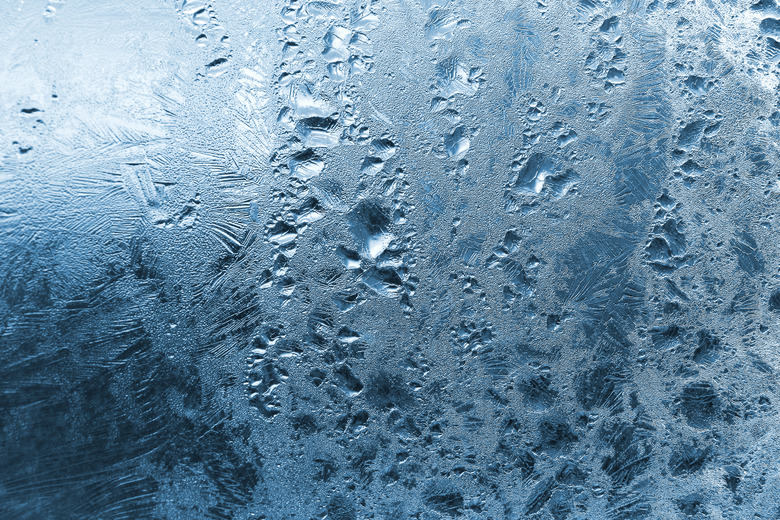Experiments On Evaporation & Surface Area
All liquids evaporate if exposed to certain elements. The rate at which a liquid evaporates depends on its molecular structure. The other factors that affect evaporation are surface area, temperature and air movement. You can do a few fairly simple experiments to demonstrate the effect that the various factors have on the rate of evaporation.
Testing the Effect of Surface Area
Testing the Effect of Surface Area
Molecules contained in a liquid evaporate from the surface area. This means that the larger the surface area, the faster the rate of evaporation. Test this by putting water into two different containers. Use one that has a diameter of a 3 or 4 inches, such as a glass, and another that has a diameter of 8 to 10 inches, such as a bowl. Put 2oz of water into a measuring jug then transfer it to the glass. Do the same for the bowl and then place the containers next to each other. This means all the other factors that affect the rate of evaporation are identical. Leave the containers for one hour. Pour the water from each container into the measuring jug and write down how much water is left. The amount of water left in the bowl is much less than is left in the glass, due to the difference in surface area.
Testing the Effect of Temperature
Testing the Effect of Temperature
Temperature affects the rate of evaporation. The higher the temperature, the more molecules move, enabling them to escape from the surface of a liquid. Fill two same-size glasses with 2oz of water. Put one glass in the refrigerator and the other in a warm place, perhaps near a heater, or on a sunny window sill. Leave the water for an hour, then pour the water from each container into a measuring jug. You find that practically no water has evaporated from the glass in the refrigerator. However, the water in the warm-placed glass has reduced. This proves that the rate of evaporation is affected by temperature.
Testing the Effect of Air Movement
Testing the Effect of Air Movement
Typically, on a windy day a puddle of rain dries quickly, but if it's not windy, the puddle takes a lot longer to dry. This is because the faster the air moves across the surface of water, the more molecules escape from the liquid so the evaporation rate increases. Do a simple experiment to prove what effect air has on the evaporation rate. Put 2oz of water in same-sized bowls so the surface area is identical. Place one where there is no noticeable air movement and the other where there is considerable air movement. You could put one outside on a windy day and the other in a sheltered place, or put one in front of an electric fan so air is blowing over the water's surface. Empty the bowls after one hour into the measuring jug. The water that was exposed to fast moving air has reduced considerably more than the water not exposed to moving air.
Testing Several Factors at Once
Testing Several Factors at Once
You can increase the rate of evaporation more by exposing the water to several factors at the same time. For example, put a bowl of water in a warm and windy place. It evaporates very quickly as the surface area is large, the temperature is warm and the air movement over the water help the molecules escape from the bowl. Compare the result to a cup of water in the fridge. Hardly any evaporation takes place as there is no air movement, the temperature is cold and the surface area is small. Mix and match the different factors to ascertain which of them has the most effect on the evaporation rate.
Cite This Article
MLA
Benham, Stephen. "Experiments On Evaporation & Surface Area" sciencing.com, https://www.sciencing.com/experiments-evaporation-surface-area-10041602/. 28 April 2018.
APA
Benham, Stephen. (2018, April 28). Experiments On Evaporation & Surface Area. sciencing.com. Retrieved from https://www.sciencing.com/experiments-evaporation-surface-area-10041602/
Chicago
Benham, Stephen. Experiments On Evaporation & Surface Area last modified March 24, 2022. https://www.sciencing.com/experiments-evaporation-surface-area-10041602/
